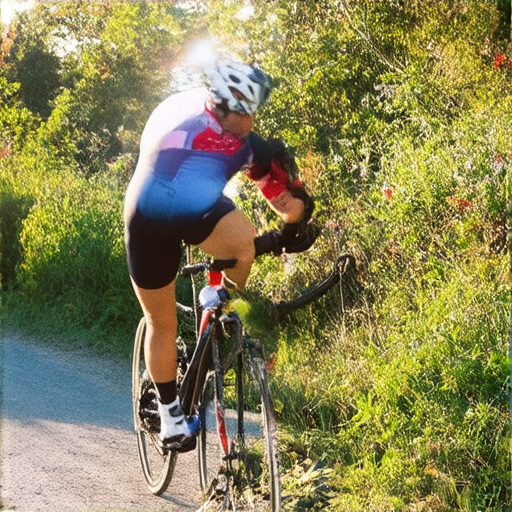Cycling enthusiasts seeking to optimize their performance and shed unwanted pounds require a well-planned approach to fueling their bodies. Effective cycling nutrition involves understanding the intricacies of macronutrient balance, hydrating adequately, and making informed decisions about pre-ride meals and post-exercise recovery. By leveraging the principles of the 75 rule, tailoring a personalized diet plan, and selecting the right supplements, cyclists can unlock peak performance and accelerate weight loss. In this comprehensive guide, we’ll delve into the world of cycling nutrition, exploring the best strategies for optimizing your cycling nutrition plan and achieving success on the road.

The 75 Rule in Cycling Training
The 75 rule is a widely accepted training principle in cycling that aims to optimize cardiovascular fitness and endurance. By allocating 75% of one’s weekly training time to low-intensity efforts below 75% of their maximum heart rate (MHR), cyclists can effectively improve their overall performance and reduce the risk of injury.
Understanding the 75 Percent Rule
The 75 percent rule suggests that during the week, 75% of your cycle training should be done at intensities below 75% of your maximum heart rate. This means that if you have a maximum heart rate of 200 beats per minute (bpm), then 75% of this value would be 150 bpm. Any training above this threshold may lead to overtraining and decreased performance.
Benefits of the 75 Percent Rule
Implementing the 75 percent rule offers several benefits:
- Improved cardiovascular fitness: Regularly exercising at moderate intensities helps strengthen the heart and lungs.
- Increased lactate threshold: As you train at lower intensities, your body adapts by increasing your lactate threshold, allowing you to perform better at higher intensities.
- Reduced risk of injury: Allowing for adequate recovery time between high-intensity sessions reduces the likelihood of overuse injuries.
Example Weekly Training Schedule
A sample weekly training schedule incorporating the 75 percent rule might look like this:
- Monday: Easy 30-minute ride at 50% MHR
- Tuesday: High-intensity interval training (HIIT) at 80% MHR (20 minutes)
- Wednesday: Rest day
- Thursday: Steady-state ride at 60% MHR (45 minutes)
- Friday: HIIT at 85% MHR (25 minutes)
- Saturday: Long slow distance (LSD) ride at 55% MHR (60 minutes)
- Sunday: Rest day or active recovery (e.g., yoga or a leisurely bike ride)
By following the 75 percent rule and incorporating a balanced mix of low-intensity and high-intensity training, cyclists can optimize their performance, reduce the risk of injury, and enjoy improved overall fitness.
Nutrition Strategy for Cycling
The optimal nutrition strategy for cycling involves a balanced mix of carbohydrates, proteins, and fats to ensure sustained energy levels throughout your ride. A well-planned nutrition approach can enhance performance, reduce fatigue, and support overall health.
Pre-Ride Nutrition
Before embarking on your cycling journey, fuel up with a light source of protein and hydration. Examples include:
- Scrambled eggs
- Porridge with milk or yogurt
- Fruit juice mixed with water
These foods provide essential nutrients, energy, and hydration to prepare your body for physical activity.
Cycling Nutrition during Exercise
During prolonged cycling sessions, focus on consuming complex carbohydrates to maintain energy stores. Opt for:
- Carb-based energy bars
- Whole-grain crackers with peanut butter or hummus
- Dried fruits and nuts
Aim to consume 30-60 grams of carbohydrates per hour to maintain energy levels.
Post-Ride Recovery Nutrition
After completing your cycling session, prioritize protein and carbohydrate intake to aid in recovery. Consider:
- Recovery bars
- Nuts and seeds
- Dried fruits and whole grains
Aim to consume 20-30 grams of protein within 30-60 minutes after exercise to promote muscle repair and growth.
Additional Tips
To optimize your cycling nutrition strategy, keep the following tips in mind:
- Avoid high-fiber foods before exercise to minimize digestive discomfort.
- Stay hydrated by drinking plenty of water throughout the day.
- Experiment with different food combinations to find what works best for you.
By incorporating these nutrition strategies into your cycling routine, you’ll be better equipped to perform at your best, recover efficiently, and enjoy a healthier relationship with food.
The Best Diet for Cyclists
A well-planned diet plays a crucial role in optimizing a cyclist’s performance, endurance, and overall health. A balanced diet rich in essential nutrients can help support muscle recovery, energy production, and immune function.
Key Nutrients for Cyclists
- Vitamin C: Essential for immune function, collagen production, and iron absorption.
- Potassium: Crucial for maintaining healthy blood pressure, promoting bone health, and supporting muscle function.
- Magnesium: Involved in energy production, nerve function, and muscle contraction.
- Fiber: Supports digestive health, satiety, and blood sugar control.
- Iron: Vital for transporting oxygen to muscles, preventing fatigue, and supporting immune function.
- Vitamin D: Essential for bone health, immune function, and mood regulation.
Dietary Recommendations for Cyclists
- Eat complex carbohydrates: Whole grains, fruits, and vegetables provide sustained energy and fiber.
- Incorporate lean protein sources: Nuts, seeds, lean meats, and fish support muscle growth and repair.
- Include healthy fats: Avocados, nuts, and olive oil promote heart health and satisfy hunger.
- Stay hydrated: Aim for at least 8-10 glasses of water per day, and monitor urine color to ensure proper hydration.
- Limit processed foods and added sugars: These can cause energy crashes, inflammation, and weight gain.
Timing of Meals and Snacks
- Aim for a balanced breakfast: Include complex carbohydrates, protein, and healthy fats to fuel morning rides.
- Post-ride nutrition: Consume a mix of carbohydrates and protein within 30-60 minutes after exercise to aid in recovery.
- Evening meals: Prioritize whole foods, avoiding heavy meals close to bedtime to maintain digestive health.
Additional Considerations
- Individual nutritional needs vary: Consult a sports dietitian or healthcare professional to determine personalized dietary requirements.
- Consider your training phase: Adjust your diet accordingly, increasing carbohydrate intake during intense training periods and reducing calories during recovery phases.

The Best Cycling Nutrition for Optimal Performance
- Pre-Ride Nutrition: A balanced meal with complex carbohydrates, moderate protein, and healthy fats 1-3 hours prior to riding is ideal.
- Aim for 200-400 calories, consisting of whole grains, lean meats, fruits, and vegetables.
- Avoid heavy meals, greasy foods, and caffeine, which can cause stomach discomfort during exercise.
Cycling-Specific Nutrients:
- Carbohydrates: Provide energy for the body, especially during prolonged rides.
- Protein: Supports muscle function, repair, and recovery.
- Fats: Offer sustained energy and support heart health.
Nutrient-Dense Snacks for Cycling:
- Bananas (rich in potassium and easy to digest)
- Energy bars (look for low-sugar, high-fiber options)
- Bagels (whole-grain, low-fat options)
- Sports drinks (electrolyte-rich, suitable for long rides)
Hydration Strategies:
- Aim to drink 17-20 ounces of water 2-3 hours before riding.
- Consume 7-10 ounces of water every 10-15 minutes during moderate-intensity rides.
- Monitor urine color to ensure proper hydration (it should be pale yellow).
Post-Ride Recovery Nutrition:
- Consume a mix of carbohydrates and protein within 30-60 minutes after riding.
- Aim for 20-30 grams of protein and 30-60 grams of carbohydrates.
- Include electrolyte-rich beverages or supplements to replenish lost salts.
What Not to Eat Before Cycling
- High-Fat Foods:
- Steer clear of fatty foods, fried foods, and foods high in saturated fats, as they can cause discomfort during exercise.
- Avoid foods that are battered, breaded, or creamy, as these can slow down digestion and lead to digestive issues.
Protein-Rich Foods:
While protein is essential for muscle recovery after exercise, consuming excessive amounts before riding may not be ideal.
Aim for moderate amounts of protein, about 15-20 grams per hour of exercise, to support energy production and muscle function.
However, avoid eating large meals or heavy protein shakes within 30 minutes to one hour before cycling, as this can cause stomach discomfort and indigestion.
Other Foods to Limit or Avoid:
- Foods High in Sugar:
- Avoid sugary drinks, desserts, and snacks, as they can cause a rapid spike in blood sugar levels and lead to energy crashes during exercise.
- Foods High in Salt:
- Avoid salty foods, such as processed meats and canned goods, as excessive salt consumption can lead to dehydration and electrolyte imbalances.
Hydration and Electrolytes:
It’s essential to stay hydrated and replenish lost electrolytes during long or intense cycling sessions.
Aim to drink water or a sports drink every 10-15 minutes, and consider adding electrolyte-rich foods, such as bananas or dates, to your diet.
Timing and Portion Control:
Pay attention to the timing and portion size of your pre-cycling meal or snack.
Aim to finish eating at least 1-2 hours before starting your ride to allow for proper digestion and minimize discomfort during exercise.

Best Supplements for Cycling
- Caffeine: Enhances endurance and reduces perceived exertion, allowing riders to maintain a high pace over longer periods.
- Beetroot: Increases oxygen delivery to the muscles, delaying fatigue and improving overall performance.
- Sodium Phosphate: Helps regulate muscle pH levels, reducing lactic acid buildup and associated fatigue.
- Beta-Alanine: Delays the onset of fatigue by increasing muscle carnosine levels, enabling riders to perform at a higher intensity.
- Sodium Bicarbonate: Reduces lactic acid accumulation, allowing riders to recover faster between efforts.
Key Considerations When Choosing Supplements
- Individual Needs: Assess your personal requirements based on factors like training intensity, duration, and frequency.
- Timing: Experiment with different timing options to find what works best for you, whether it’s pre-ride, post-ride, or both.
- Dosage: Start with low doses and gradually increase as needed, monitoring your body’s response to avoid adverse effects.
Additional Factors to Consider
- Nutrition: A balanced diet should always be the primary source of energy and nutrients; supplements should complement, not replace, a well-planned meal plan.
- Adequate hydration is crucial for optimal performance and recovery; ensure you’re drinking enough water throughout the day.
- Sleep and Recovery: Prioritize rest and recovery to allow your body to repair and adapt to the demands of training.

0 Comments